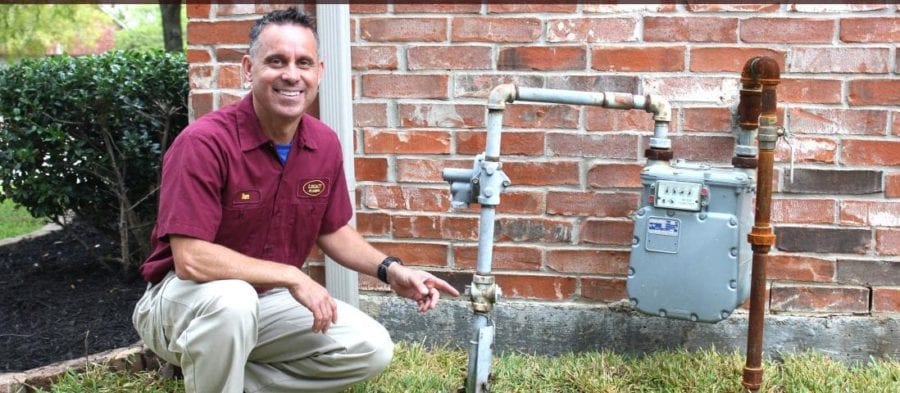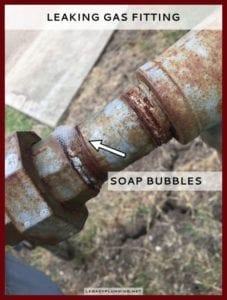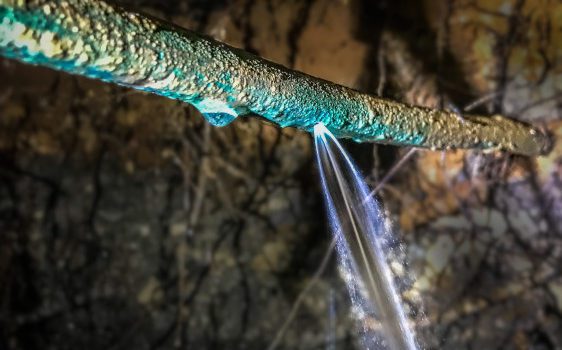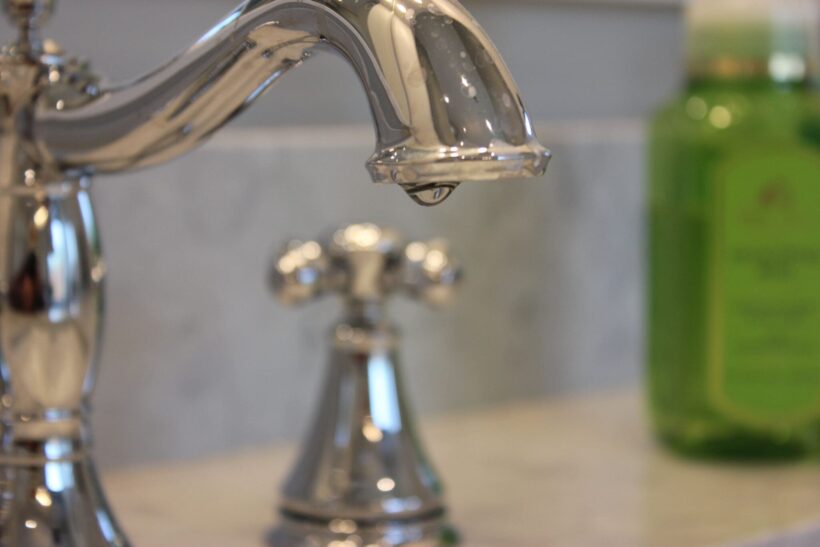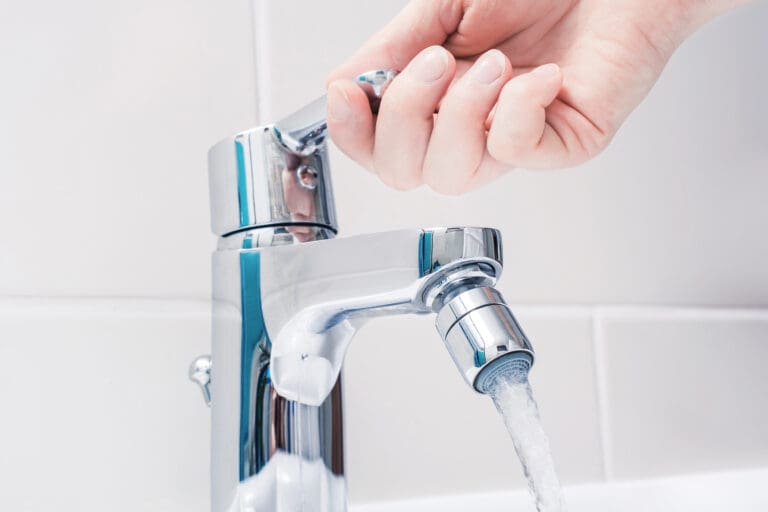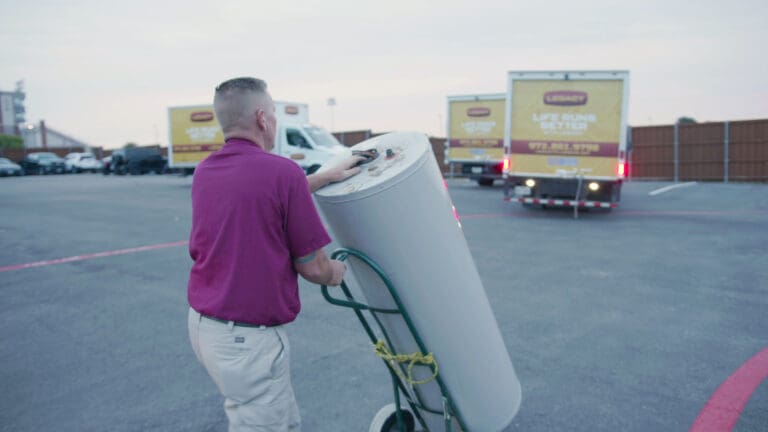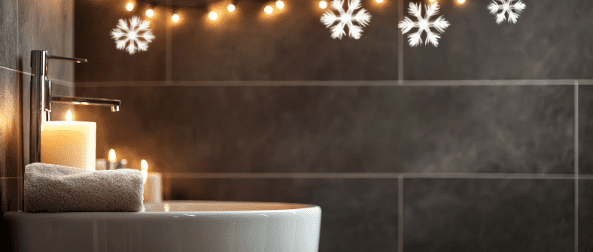A Homeowner’s Checklist
Everyone knows that when plumbing goes bad, it can cause significant water damage to the home. It is always better to be proactive when it comes to plumbing maintenance. There are many things you can do yourself to catch problems before they get worse and cause issues.
In this article, we’ll go through things that should be checked on a regular basis every year or every six months. With regularly scheduled checkups, your plumbing can stay healthier and you can sleep easier.
Yearly
Check Shut-Off Valves
Every fixture in your home should have specific shut-off valves. For instance, there should be two valves (hot and cold) under each sink. There should be a cold water valve behind each toilet. There should also be a shut-off valve for the cold water line that feeds your water heater(s). There should be hot and cold valves for the laundry washing machine. There should also be a cold water valve behind your refrigerator for the ice maker/water dispenser.
Plumbing needs to be used on a regular basis in order to stay in good working condition. If you do not use one of these valves for a long period of time, then there is a much greater chance of them failing when you need them most. The valves may get stiff and hard to turn. The rubber may get brittle and be prone to leaking. Calcium may build up in the chamber of the ball valve and make it difficult to shut off all the way.
It is a good idea to exercise all of these valves at least once a year. This will not only help the valves stay in good working condition. It will also alert you to any failing valves so that you can replace them before you really need them to work in the event of a plumbing emergency.
It’s simple, just run water through whichever valve you are using and then turn the valve off and on a couple of times. Because the water is flowing through the valve, it will wash away any debris that gets disturbed, and it will also make you aware if the valve does not shut off all the way.
As a word of caution: if the valve has not been operated for a long time, there is an elevated risk of the valve breaking while you attempt to operate it. Do this at your own risk. Legacy Plumbing is not responsible for any leaks or damage that result from operating failed plumbing valves in the way they were designed. Learn more about shut-off valves in this video:
Check Water Pressure
The water pressure delivered to your home can change over time as changes are made to the infrastructure that provides your utilities. Also, if you have a pressure reducing valve (PRV), the pressure will often change over time as the PRV wears out. It is a good idea to check the water pressure every so often in order to make sure your house’s plumbing is not being exposed to excessive water pressure.
Water pressure delivered to the fixtures should be between 40 psi and 80 psi. If it is lower than that range, fill valves for toilets and other fixtures may not function properly. If it is higher than that, it is putting more wear and tear on the weak points of the system than what they were designed to handle.
In our service area, there are several places (such as Frisco) that have frequent issues with high water pressure. It tends to increase the risk of broken toilet fill valves and broken/leaking solenoid valves or other plastic parts.
It is really simple to check the pressure too. You just need to purchase a pressure gauge with hose threads. You can get these at any home improvement store or buy them online. Simply screw the gauge onto the hose connection at your outdoor faucet and turn the faucet on. Then, read the pressure on the gauge. If your pressure is not within the acceptable range, the pressure reducing valve may need to be adjusted or replaced. Call us for more details.
Check Gas Connections
If you have natural gas powered appliances in your house, it is important to check the connections periodically to make sure you don’t have any gas leaks. The most important places to check are at flexible gas supply lines, gas manifolds, and gas risers.
Gas supply lines are the flexible corrugated pipes that connect the appliance to the shut-off valve for that appliance. Check at water heaters, furnaces, gas stoves, etc…
Gas manifolds are places where a bunch of CSST, individual gas lines connect to a single, large supply line. This is usually found in the attic space of a newer slab home. Because there are a lot of connections at this point (and very often a pressure regulator) it is important to check it for leaks as well.
Gas risers are the pipes that bring the buried gas line in the yard up above grade where it feeds an outdoor appliance (such as a pool heater or outdoor fireplace) or enters a structure. Because these connections are often exposed to the elements and to being bumped or jarred, it is important to check them periodically for leaks as well.
The way to check these connections is relatively simple. You can either just use your sense of smell or you can use soapy water (which is better). If you have a gas fireplace or gas stove, you probably know that natural gas has a very distinct odor that is put there on purpose for safety reasons. If you have a reasonably keen sense of smell, you can usually detect even small leaks by getting close and smelling the connections. It is an easy way to detect small leaks before they become bigger.
Secondly, you can mix equal parts of water and dish soap together in a spray bottle and thoroughly spray every exposed fitting at the previously listed locations. If you watch closely, you will see a consistent growth of bubbles being formed wherever there is a leak. If you find a leak, be sure to call us so that we can resolve the issue before it gets worse.
Flush Tankless Water Heater
Many people with tankless water heaters are not aware that they need to be serviced on a regular basis. It is even more important for tankless water heaters than it is for tank-style water heaters due to all of the small passageways in the heat exchanger of the tankless water heater. If your water has a lot of minerals such as calcium in it, then these passageways can easily become clogged by the calcium buildup unless it is flushed with a descaling solution on a regular basis.
Be aware, if you attempt to flush a tankless water heater after it hasn’t been serviced for a long time, it may expose further issues such as a compromised heat exchanger. If the water heater has gone 6 years or more without maintenance, the risk of this increases significantly.
Depending on your level of comfort with DIY projects, this may or may not be something you do yourself versus having a professional do it. It requires a special descaling pump and some basic hand tools. If everything goes smoothly and the tankless water heater was set up correctly, it is a relatively straightforward task. If the heater is older or was installed incorrectly, it may require more work to take care of this properly. Call us for more details.
Clear Hair From Drains
Depending on how often sinks, tubs, and showers are used and who is using them, hair will inevitably build up inside the p-trap, strainers, pop-up assemblies, etc. This hair will provide a scaffold for soap scum and gunk to collect and stop up the drain. Many people try to remedy this with a liquid drain cleaner of some sort. While this sometimes helps with soap scum buildup, it very frequently does a poor job dissolving the hair inside the drain. Also, these chemicals are often harsh and can damage metal plumbing parts.
The best way to take care of this buildup is to manually clean it out with either an auger, hair removal tool, or by disassembling the drain and cleaning out the buildup by hand. Warning: this can be a nasty job sometimes, so be prepared if you are attempting this yourself for the first time.
They sell dedicated augers which are made to spin around inside the drain pipe and catch any hair buildup. They also sell smaller plastic tools that are just designed for short runs down into the pop-up or p-trap to remove hair.
If you do take apart the drain pipes under the sink, be sure to have a bucket and plenty of cleaning supplies. Make sure you thoroughly test the connections for leaks when you are done by filling up the basin with water and letting it all drain out.
Check Gas Appliance Vents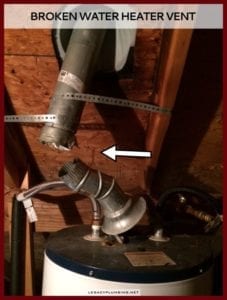
Most natural gas powered appliances need to have vents to take away the combustion byproducts such as carbon monoxide and put them outside your house. Most of the time, these vents are metal (because they get hot) and go up through the roof of the house. Heavy winds or roofing work frequently disturb these vents which can create unsafe situations such as disconnected vents or vents that are touching combustible materials.
Single-wall venting needs to have 6 inches of clearance all the way around it from any combustible materials. Double-wall venting needs to have at least 1 inch of clearance. All venting needs to be secured with metal strapping to prevent it from moving. Check your water heaters and furnaces to make sure that they have proper clearance, are secured properly, attached to the appliance, and have a good seal through the roof so that rainwater doesn’t leak down. Then, go outside and check to make sure the exterior portion is intact and that it has a vent cap to prevent rainwater from going down it.
Every 6 months
Check Expansion Tank
The expansion tank is installed on tank-style water heaters when they are connected to a closed-loop system. They are required for all water heater installations in some cities in our service area. Expansion tanks are roughly the size of a soccer ball and are usually installed on the upper right-hand side of the water heater. They are typically a cream or blue color.
Expansion tanks are often neglected, but they need more frequent inspection and need to be replaced more often than the water heater. They have a rubber bladder inside them that is constantly moving back and forth. When this wears out, it ceases to do its job of protecting the home’s plumbing system against excessive pressure caused by thermal expansion when the water heater fires up on a closed-loop system.
We have another article with a lot of good information regarding the expansion tank which goes into detail on how to check it. Check it out!
Check Automatic Shut-Off Devices
If you don’t have an automatic shut-off valve on your water heater, it may be a good idea to look into if your water heater is located in an area where it may cause damage when it starts to leak. Check out this video to learn more.
One of the most common brands of this device in our area is called the Floodstop. It operates primarily on a regular household electric outlet, but it also has a battery backup. It’s important to change these batteries out every 6 months to make sure they are fresh and can do their job of closing the valve whenever there is an emergency.
Also, changing out these batteries is a good opportunity to test the auto shut-off valve for proper operation. Usually, the sensors for these are very sensitive and can be set off by simply touching them with your bare finger. You can test the sensors in this way and also test the valve by turning the buttons on and off.
Check Water Heater Connections
While you are there with the water heater, do a thorough visual inspection of all of the exposed connections. Check where the water lines connect to the top of the water heater. Follow them back to any exposed fittings and valves. Look for any signs of moisture. Look for calcium/mineral buildup in the form of a white, powdery substance accumulating on the valve.
Check the emergency catch pan below the water heater to look for any signs of moisture. Check up and down the vent if it is a natural gas powered water heater. Look for trails caused by rainwater leaks.
Check the gas line that goes to the heater. Smell or soap-test to make sure there are no leaks.
Checking the water heater on a regular basis is one of the best ways you can protect yourself against water damage from floods and leaks. Watch this video to learn more about the life-expectancy of tank-style water heaters.
Check Faucets For Drips
Most of the time, dripping faucets show up pretty quickly. But if you have faucets that you are not in front of or don’t use on a regular basis, it is a good idea to check those periodically to make sure they are not dripping. You would be surprised how much a simple dripping faucet can add to your water bill over time. Also, the longer a plumbing fixture drips, there is a higher likelihood that the faucet is being irreparably damaged and may need to be replaced.
Don’t forget to check your outdoor hose faucets as well. Sometimes these can be tucked away behind landscaping and rarely checked.
Check Toilet Flappers and Tank Bolts
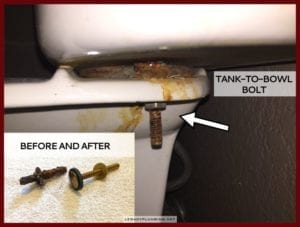
One of the biggest causes of water damage in homes is toilet issues. There are a lot of ways toilets can fail and leak, causing damage to the home. One of the most common is deteriorated tank-to-bowl bolts. These are the bolts that hold the tank onto the base of a typical two-piece toilet. They are sealed with rubber washers. These will eventually rot and the bolts will eventually rust. Over time, this can lead to a slow leak that starts dripping down the back part of the toilet where it is difficult to see. Check the space between the tank and the bowl with a flashlight. If you see signs of rust/moisture, get those bolts replaced as soon as possible.
Also, check the flapper. The flapper is the rubber disk seal inside the toilet tank which keeps all the water in the tank until you flush. Once you flush, all that water rushes down into the bowl and siphons it out. If the flapper is bad or deteriorated, then it will slowly start to leak water from the tank down into the bowl. You may not notice it for a long time, and it can waste a lot of water.
You may hear the toilet kick on from time to time as it fills back up to replace the water that is being lost. You can do a quick check with toilet dye tablets or simple food coloring. Take the lid off the back of the tank and put the coloring into the tank water. It will turn all of the water that color. Then, open the bowl lid/seat and watch that water for 5-10 minutes. If the water in the bowl stays clear and doesn’t start to change color, the flapper is still good.
Additional Maintenance
Service the Water Softener or Filtration System
If you have a water softener installed or a water filtration system of some kind, it will need regular maintenance, whether it’s changing the filter or refilling the salt tank. The instructions for proper maintenance vary quite a bit based on the type of system and the manufacturer. Read, understand, and follow all of the manufacturer’s maintenance guidelines for your system. In addition, do a thorough visual inspection every once in a while to check for any signs of moisture caused by leaking connections.
Check Condensate Connection Drain
For more information on the air conditioning condensate drain, check out this extensive article. The condensation drain carries water from your AC unit to your plumbing drain system every time the air conditioner is running.
You need to know where your condensation drains to. Most of the time, it connects to the drain piping under a lavatory sink or to the drain piping in the wall behind the bathtub. AC condensation carries with it all sorts of dust and bacteria from the air, which tend to grow into gel-like gunk that clogs up the drain it connects to.
During the season that you are running your air conditioning unit, check the fixture drain every two months. Fill up the basin of the sink where the condensation connects to and let it drain. This way, you will get a good idea of how quickly the sink drains normally and you will notice when it starts to slow down. When this happens, make sure to deal with it right away. If the sink stops up, it will still continue to fill with condensate water and this can overflow the sink and cause damage if it isn’t dealt with.
Legacy Gold Plan
Regular home maintenance can do so much to avoid large expenses and headaches down the road. If you are a new homeowner or just never kept up with plumbing maintenance before, it can be intimidating at first.
If you would like a head-start on all of this, considering getting the Legacy Gold Plan. This plan comes with a full visual inspection and written report of your home’s plumbing system.
During the inspection, one of our licensed plumbers will put an experienced eye on the home’s plumbing systems and alert you about possible issues. While they are there, you can ask any questions you’d like about plumbing maintenance. Feel free to give us a call if you have any questions.







